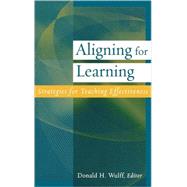
Wayne H. Jacobson is associate director of the Center for Instructional Development and Research (CIDR) at the University of Washington. He provides leadership for CIDR's day-to-day operations, teaches graduate school courses on teaching and l earning in higher education, and consults with department sand faculty in mathematics, Science, and engineering. Wayne has more than 20 years of teaching and consulting experience in higher education in the U.S. and Asia. He received bachelor's and master's degrees from the University of Minnesota. He has also received a master's degree in counseling psych9logy and a Ph.D. in adult education from the University of Wisconsin-Madison.
Karen Freisem is a senior consultant at the Center for Instructional development and Research (CIDR) at the University of Washington, where she works primarily with the mathematics, science, and engineering departments. She consults with faculty and graduate teaching assistants, designs and facilitates workshops, and assists departments in planning and implementing curriculum and program assessment. For 10 years before joining CIDR in 1986, Karen developed curriculum and taught in a variety of settings. Her current research interests focus on student perceptions of effective instruction in large classes. She has served as chair fo the International Teaching Assistants Interest Section of TESOL (Teachers of English to Speakers of Other Languages). Karen received her M.A. in Slavic linguistics and her M.A.T. in English from the University of Washington.
Deborah H. Hatch is a senior consultant at the Center for Instructional Development and Research (CIDR) at the University of Washington, where she has worked with faculty and graduate students on teaching and learning issues since 1987. In addition to her work at CIDR, she taught for 15 years in the University of Washington's Interdisciplinary Writing Program, an experience that made her particularly aware of the role of disciplinary contents in student writing. her publications and presentations are in the areas of student writing, teaching portfolios, and the scholarship of teaching and learning. She teaches a graduate school course on teaching and learning in higher education and regularly contributes her expertise to university curriculum committees and task forces. Deborah received her B.A. from Swathmore College and her Ph.D. in English from the University of Massachusetts.
Margaret Lawrence is a senior consultant at the Center for Instructional Development and Research (CIDR) at the University of Washington. She is also the designer of and instructor for training courses in China-America Personnel Service's Teaching English as a Foreign Language Program. She has been teaching for 20 years and has been a consultant at CIDR for the last 14 of those years. In her role at CIDR, she works with faculty, graduate teaching assistants, and departmental administrators in the foreign language, humanities, and social sciences departments. Her recent research has focused on student interpretations of student ratings form items and the implications of those interpretations for faculty practice. Margaret received her B.A. and her M.A. in English from the University of Oregon.
Lana Rae Lenz is a senior consultant and coordinator for program development at the center for Instructional Development and Research at the University of Washington. In her consulting, she assists administrators, faculty, and teaching assistants with the design, implementation, and assessment of courses and instructional programs, primarily n the arts, humanities, and social sciences. In her coordinator role, she assumes leadership for the development and implementation of special projects undertaken by CIDR as a part of its mission within the university. For 37 years she has been actively involved in teaching, training, and consulting for community professionals in all levels of education and in business, media, mental health, and public service. Lana Rae received her B.A. in English and education and her M.A. in speech communication.
| About the Authors | v | ||||
| Foreword | xv | ||||
| Preface | xvii | ||||
|
|||||
|
3 | (15) | |||
|
|||||
|
|||||
|
18 | (17) | |||
|
|||||
|
|||||
|
35 | (16) | |||
|
|||||
|
|||||
|
51 | (14) | |||
|
|||||
|
|||||
|
65 | (15) | |||
|
|||||
|
|||||
|
|||||
|
80 | (15) | |||
|
|||||
|
|||||
|
95 | (11) | |||
|
|||||
|
|||||
|
106 | (14) | |||
|
|||||
|
|||||
|
120 | (14) | |||
|
|||||
|
|||||
|
|||||
|
134 | (13) | |||
|
|||||
|
|||||
|
147 | (15) | |||
|
|||||
|
162 | (15) | |||
|
|||||
|
|||||
|
177 | (15) | |||
|
|||||
|
|||||
|
|||||
|
|||||
|
192 | (14) | |||
|
|||||
|
|||||
|
206 | (18) | |||
|
|||||
|
|||||
|
|||||
|
|||||
|
224 | (13) | |||
|
|||||
| Index | 237 |
The New copy of this book will include any supplemental materials advertised. Please check the title of the book to determine if it should include any access cards, study guides, lab manuals, CDs, etc.
The Used, Rental and eBook copies of this book are not guaranteed to include any supplemental materials. Typically, only the book itself is included. This is true even if the title states it includes any access cards, study guides, lab manuals, CDs, etc.